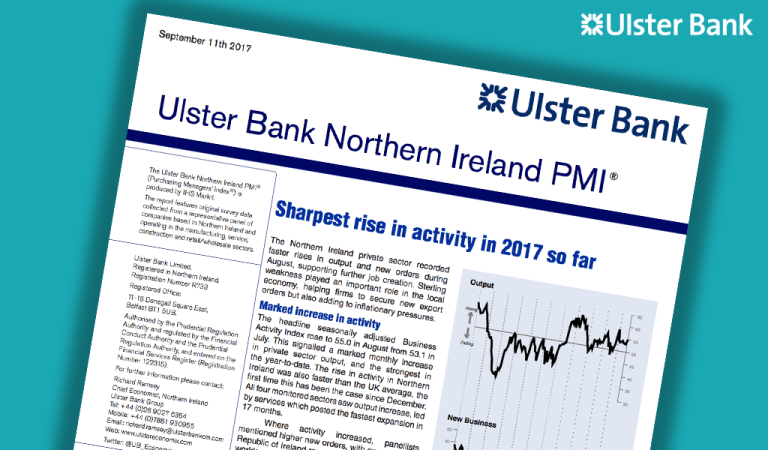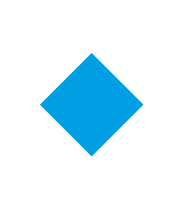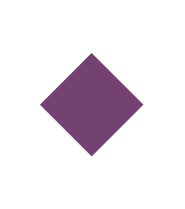13 September 2017

Northern Ireland experiences sharpest rise in activity so far in 2017
The Northern Ireland private sector recorded faster rises in output and new orders during August, supporting further job creation - according to the August data from the Ulster Bank Northern Ireland PMI®, which has just been released. Sterling weakness played an important role in the local economy, helping firms to secure new export orders but also adding to inflationary pressures.
The headline seasonally adjusted Business Activity Index rose to 55.0 in August from 53.1 in July. This signalled a marked monthly increase in private sector output, and the strongest in the year-to-date. The rise in activity in Northern Ireland was also faster than the UK average, the first time this has been the case since December. All four monitored sectors saw output increase, led by services which posted the fastest expansion in 17 months. Where activity increased, panellists mentioned higher new orders, with exports to the Republic of Ireland reportedly supporting rises in workloads.

Marked increases in new orders resulted in pressure on operating capacity at companies in Northern Ireland, with backlogs of work rising solidly. Higher workloads, as well as confidence regarding future projects, encouraged companies to take on extra staff in August.
The rate of input price inflation accelerated for the first time in four months, with panellists mainly linking higher cost burdens to sterling weakness. The passing on of increased input prices resulted in a sharp rise in output charges, with inflation accelerating to a five-month high. Meanwhile, business sentiment improved for the second month running and was the highest since May.

Northern Ireland firms reported faster rates of growth in business activity than the UK average for the first time this year. Whilst Northern Ireland saw an 8-month high in the rate of business growth, UK firms posted the slowest rate of expansion in six months. The fact that London and the South East are not acting as the traditional dynamo of the wider economy is a major factor.
It would appear that Northern Ireland is benefiting from the robust recovery in the Eurozone. Indeed, the latter is currently growing at twice the rate of the UK. Northern Ireland firms are taking advantage of having one of the fastest growing economies in Europe - the Republic of Ireland - on its doorstep. Throw a weak currency into the mix and the conditions are ideal for local firms selling into the Republic of Ireland / Eurozone market.
All sectors saw their rates of business activity rising in August. Services though was the stand-out performer. Indeed, its output and employment hit 17-month and 41-month highs respectively. Although activity in the construction sector grew, it was only marginally so. Meanwhile manufacturing and retail both rebounded from their recent lows, with sterling's weakness acting as a tailwind in both sectors, for now.

A major challenge remains inflation. Indeed, construction saw the fastest rise in input cost inflation in eight months. Firms appear to be passing their rising costs onto their customers with the price of goods and services rising across all sectors.

Looking ahead, the robust rates of growth in new orders across most sectors bodes well for activity in the months ahead. However, inflationary pressures will act as a break on consumer spending in the domestic market. And longer-term economic prospects are clouded political uncertainty on a number of levels.
Source: Richard Ramsey, Chief Economist Northern Ireland, Ulster Bank.
Downloads Mail response and attention continue on an upward trajectory in Q1 2024
Mail response and attention continue on an upward trajectory in Q1 2024
14 June 2024
JICMAIL - The Joint Industry Currency for Mail – has revealed that while the UK economy grappled with the recovery from a technical recession, those advertisers who maintained their confidence in the mail channel were rewarded with 43% year on year growth in purchases driven by mail.
 Sustainability Research - industry efforts gain pace to improve sustainability impact and credentials
Sustainability Research - industry efforts gain pace to improve sustainability impact and credentials
6 June 2024
Access a special extract of the sustainability research conducted as part of the BPIF's Printing Outlook - quarterly survey of the state of trade in the UK's printing industry.











